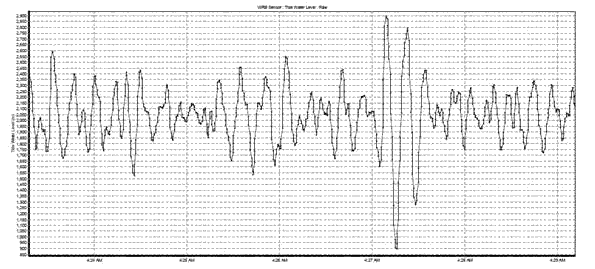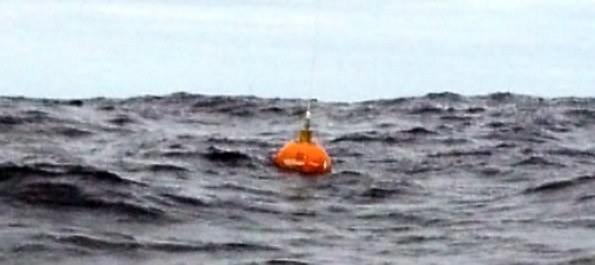Record-breaking wave off Tasmania's west coast
04 September 2012
A monstrous 20-metre wave formed in the waters off Tasmania's west coast on August 6, 2012, eclipsing the previous record of 19.83 metres set in 1982.
The wave was measured by the Bureau's Cape Sorell waverider buoy. Engineers checked that the data was genuine and not the result of a buoy being dumped by a large breaking wave.
Like a wild elevator ride at sea
The graph below shows the rising and dropping of the water level during the event. To get a sense of what vessels at sea would have experienced, imagine a wild ride in a lift. You rise suddenly from the tenth to the fourteenth floor, then drop to the seventh before rising back up to the fourteenth, dropping again to the ninth and shooting back up to the twelfth floor—all within 30 seconds!

Plot of the raw water level during the event. Vertical grid lines are a minute apart.
Conditions leading to the monster wave
At the time of the wave, a deep low pressure system was passing south of Tasmania. Strong winds blew across the state. A gust of 154 km/h was recorded at Maatsuyker Island—speeds usually associated with category two cyclones.
The record-breaking wave was formed when two wave systems merged. Within each system were waves of varying sizes, the largest wave in each joining forces to create the 20-metre monster.

Waverider buoy off the coast of Tasmania.
Capturing and delivering wave height data
The Bureau has another waverider buoy off Cape du Couedic on Kangaroo Island.
As these buoys rise and fall in the water, an accelerometer measures vertical movement. Data is radioed to a land station and then published on the Bureau's website.


Comment. Tell us what you think of this article.
Share. Tell others.